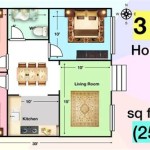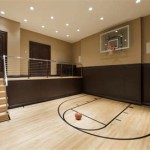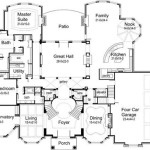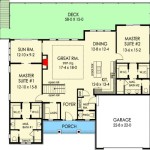Two Bedroom One Bathroom House Plans: Maximizing Space and Efficiency
Two bedroom, one bathroom house plans represent a popular choice for a variety of homeowners, from first-time buyers and small families to downsizing retirees and single individuals. These plans offer a practical balance between affordability, functionality, and manageability. The relatively compact size minimizes construction costs, reduces maintenance requirements, and promotes energy efficiency. Careful consideration of layout and design is crucial to maximizing the available space and ensuring a comfortable and livable environment.
The appeal of a two bedroom, one bathroom home extends beyond its cost-effectiveness. These plans are well-suited for urban environments where land is at a premium, as well as suburban and rural settings. They can serve as starter homes, investment properties, or vacation getaways. The adaptability of this floor plan makes it a versatile option for a broad range of needs and lifestyles. Thoughtful planning is essential to transform a seemingly small space into a functional and enjoyable dwelling.
Key Considerations for Two Bedroom One Bathroom House Plans
Designing a two bedroom, one bathroom house requires careful attention to detail to optimize the use of every square foot. Several key considerations influence the overall functionality and livability of the space. These factors include the layout, storage solutions, natural light, and accessibility.
Layout and Flow: The layout of a two bedroom, one bathroom house plan should prioritize a smooth and logical flow between rooms. The living area, kitchen, and bedrooms should be strategically positioned to minimize wasted space and maximize convenience. Open-concept layouts, where the living room, dining area, and kitchen are combined into a single, unified space, are a common strategy for creating a more spacious feel. Hallways should be minimized, if not entirely eliminated, to avoid unnecessary square footage devoted to transition spaces. The placement of the bathroom is also crucial; ideally, it should be easily accessible from both bedrooms and the common living areas without being directly visible from the front entrance or the living room.
Storage Solutions: Adequate storage is paramount in smaller homes. Built-in storage solutions, such as shelving, cabinets, and drawers, can significantly enhance organization and reduce clutter. Closets in both bedrooms should be maximized with efficient shelving systems and hanging rods. The kitchen should be designed with ample cabinet space, utilizing vertical space to its full potential. Multi-functional furniture, like storage ottomans or beds with built-in drawers, can provide additional storage options without taking up extra floor space. Furthermore, exploring options for attic or crawl space storage can be beneficial for storing seasonal items or lesser-used belongings.
Natural Light and Ventilation: Maximizing natural light and ventilation is critical for creating a bright, airy, and comfortable living environment. Large windows and strategically placed skylights can flood the interior with natural light, making the space feel more open and inviting. Proper ventilation helps to circulate fresh air, reduce humidity, and improve indoor air quality. Windows should be strategically positioned to allow for cross-ventilation, particularly in the bedrooms and bathroom. Consider incorporating a small patio or deck area to extend the living space outdoors and provide access to fresh air and sunlight.
Design Elements for Maximizing Space and Functionality
Beyond the overall layout, specific design elements can significantly contribute to the perceived spaciousness and functionality of a two bedroom, one bathroom house. These elements include the use of color, furniture selection, and the incorporation of multi-purpose spaces.
Color Palette: The color palette plays a vital role in creating a sense of spaciousness. Light and neutral colors, such as white, cream, and light gray, reflect light and make spaces appear larger. Accent walls in bolder colors can add personality and visual interest without overwhelming the room. Consistent use of a limited color palette throughout the house creates a cohesive and harmonious flow. Avoid dark or overly saturated colors, as they can absorb light and make the space feel smaller and more enclosed.
Furniture Selection: The scale and style of furniture are crucial considerations. Choose furniture that is appropriately sized for the space, avoiding bulky or oversized pieces that can make the room feel cramped. Multi-functional furniture, such as sleeper sofas, folding tables, and nesting tables, can provide versatility and save space. Opt for furniture with clean lines and minimal ornamentation to create a streamlined and uncluttered look. Consider using floating shelves or wall-mounted cabinets to free up floor space and create a more open feel.
Multi-Purpose Spaces: Designing spaces that can serve multiple functions is a key strategy for maximizing the utility of a small home. A guest bedroom can double as a home office or a hobby room. A dining area can also function as a workspace. A kitchen island with bar stools can serve as both a cooking surface and a casual dining area. The key is to choose furniture and design elements that can easily adapt to different uses.
Specific Room Considerations
Each room in a two bedroom, one bathroom house plan presents unique design challenges and opportunities. Careful consideration of the specific needs of each space is essential for creating a functional and comfortable home.
Bedrooms: The bedrooms should be designed as restful and relaxing retreats. The master bedroom should be prioritized for size and comfort, with ample space for a bed, dresser, and nightstands. The second bedroom can be smaller and designed for guests, children, or use as a home office. Both bedrooms should have adequate closet space and good natural light. Consider incorporating built-in shelving or window seats to maximize storage and create cozy reading nooks. Soundproofing measures, such as insulation and solid-core doors, can help to minimize noise and create a more peaceful sleeping environment.
Bathroom: The bathroom should be designed for efficiency and functionality. A well-designed bathroom can feel surprisingly spacious, even in a small footprint. Consider using a pedestal sink or a wall-mounted vanity to save floor space. A shower-tub combination is a versatile option for maximizing functionality. Adequate ventilation is essential to prevent moisture buildup and mold growth. Good lighting is also crucial for tasks such as shaving and applying makeup. Consider incorporating a large mirror to create the illusion of more space. Storage can be maximized with built-in shelving or a medicine cabinet.
Kitchen: The kitchen is the heart of the home and should be designed for both functionality and aesthetics. A well-designed kitchen can make cooking and entertaining a pleasure, even in a small space. Efficient use of space is paramount. Consider using vertical space to its full potential with tall cabinets and shelving. A well-planned work triangle, consisting of the sink, refrigerator, and cooking range, is essential for efficient food preparation. Adequate counter space is also crucial. Consider incorporating a kitchen island or peninsula to provide additional workspace and seating. Good lighting is essential for cooking and cleaning. Under-cabinet lighting can provide task lighting for countertops. A well-ventilated kitchen is also important to prevent odors and smoke from lingering.
Living Room: The living room should be designed as a comfortable and inviting space for relaxing and entertaining. The layout should be conducive to conversation and interaction. Seating should be comfortable and appropriately sized for the space. A focal point, such as a fireplace or a large window, can help to define the room. Adequate lighting is essential for both day and night. Consider using a combination of ambient, task, and accent lighting to create a warm and inviting atmosphere. Storage can be incorporated into the living room with bookshelves, cabinets, or a coffee table with storage. The use of rugs can help to define different zones within the room.
Overall, designing a two bedroom, one bathroom house plan requires careful planning and attention to detail. By considering the key factors discussed above, homeowners can create a comfortable, functional, and stylish living space that meets their specific needs and lifestyle.

Cottage Style House Plan 2 Beds 1 Baths 856 Sq Ft 14 239 In 2024 Tiny Floor Plans Cabin

With 1 Bed 2 Bath One Bedroom House Plans Small Floor

Pin On House Plans

2 Bedroom House Plans Monster

Two Bedroom One Bathroom 2 Bed Apartment Embassy Ozark

The Best 2 Bedroom Tiny House Plans Houseplans Blog Com

Cottage Style House Plan 2 Beds 1 Baths 856 Sq Ft 14 239 Plans Coastal Small

Two Bedroom Bathroom House Plans 2

12 Simple 2 Bedroom House Plans With Garages Houseplans Blog Com

Practical 2 Bedroom House Plan With L Shaped Kitchen








